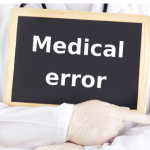In considering Julia’s death as an example, it is well known that aspirin increases the risk of gastrointestinal bleeding. But let’s say for the sake of argument that the increase is a whopping 90%. To use rounded figures, if the risk of a bleed in any given year is one in 100, a 90% increase would mean the risk goes up to 1.9 per 100. This means, in turn, that one is still more likely to have a bleed spontaneously even without taking aspirin. Whether the medication increased the risk 10% or 1,000%, that risk was balanced by some perceived gain.
I can only guess when Julia’s bleeding began. Was this indeed the flu, with the bleed coming later? Or, all along, was this simply an ulcer with symptoms of fatigue and aching that mimicked flu? What was the contribution of factors such as other medications, smoking, alcohol use, or stress? And what was my obligation to ask about tarry bowel movements? I am not sure why, on this particular fall day, I happened to field a call about cancelling an appointment, a call that would normally prompt just a routine message from my secretary. Even to this day, I would not be likely to enquire of a patient who complains of flu-like symptoms, “So tell me, what color are your stools?”
“Do you think that I could have saved her?” her tearful son asked me.
“Do you think that I could have saved her?” my conscience asked me.
Exploring Probabilities
Medical advice rests on probabilities: Take this antibiotic because there is a 90% chance that the bug infecting you is sensitive to it. But probabilities always have a flip side. If there is a 90% chance that the antibiotic will help, there is a 10% chance that it will not be beneficial. And there is a separate, additional dimension—the probability of harm. The probability might be less than 1% with antibiotics, but, in circumstances like the use of chemotherapy for certain malignancies, the likelihood of some harm might approach 100%. As physicians, we sometimes forget that our advice relies on probability.
The implication of these considerations is that the best, most rationale advice may not produce the intended outcome. Probabilities mean that a bad outcome is not always tantamount to bad judgment. In offering medical advice, we, as rheumatologists, arguably wrestle with more uncertainty than any other subspecialty. However, even a cardiologist should hospitalize a few patients for chest pain that is not cardiac in origin. Even the best general surgeon should take out an occasional appendix that bears no abnormality.


